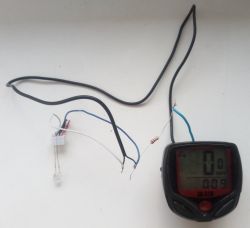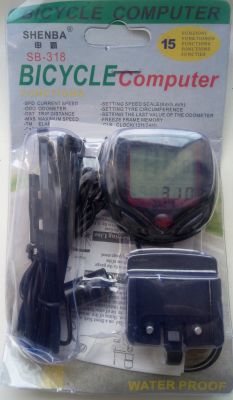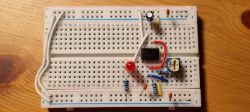 .
.
I prove that it is possible to measure instantaneous power and watt-hours consumed with the cheapest bicycle meter, a phototransistor and a resistor
You only need to:
- take the plus battery out of the meter
- cut the reed switch from the cable and identify which of the two wires is the minus of the battery
- connect the emitter of the phototransistor to minus and the collector to the return wire
- connect a resistor between the positive and the collector of the photo transistor
- connect the phototransistor to the LED in the energy meter
I used a Shenb SB-318 counter ($2), a FT06-M phototransistor (£1.20) and a 10kΩ resistor.


 .
.
And here's a video showing how it works when an approximately two-kilowatt kettle finishes boiling water:
The energy meter does 2,500 pulses per kilowatt hour, so I've set a circle circumference of 4,000 mm, so the result of 21.1 km/h means an intake of 2110 W.
You can see that with each pulse, 4 metres of distance is gained, and the 1,580 km gained is 0.158 kWh.
Unfortunately, the bike meter does not show speeds of less than ~3 km/h, which translates to 300 W. An energy meter doing more imp/kWh would have been better suited.
Finally, I'm glad to have met @efi222's challenge from https://www.elektroda.pl/rtvforum/topic4067036.html#21167617
Cool? Ranking DIY






